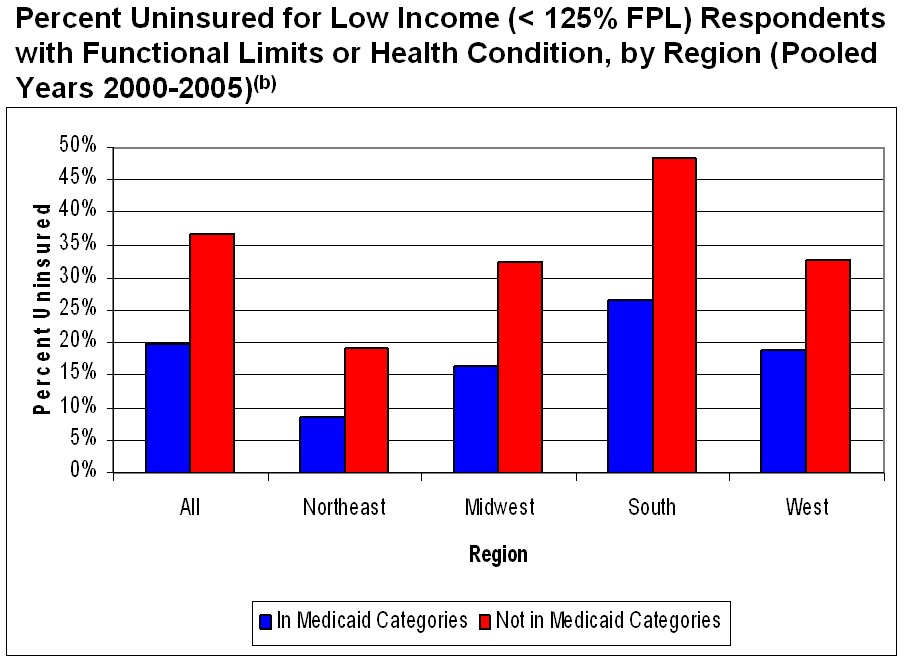The figure below shows what lack of insurance means in terms of deaths (h/t Ezra Klein). In 2006, the last year for which figures are reported, 22,000 individuals died due to lack of health insurance. Kevin Drum makes the plausible guess that the figure is up to 25,000 for the current year, given population growth and growth in the percent uninsured. The figure is from a January 2008 Urban Institute report [pdf] by Stan Dorn.
It is worth contemplating a bit more who these uninsured individuals are. Some are low-income people with chronic health conditions or disabilities. Individuals in that category can have outrageously high uninsurance rates, nearly 50% if they live in the south and do not qualify for public health programs. The figure below illustrates this and is based on work documented in a recent Health Affairs paper by Frakt, Pizer, Iezzoni. (See also this prior post.)
Now, I’m not suggesting it is the same low-income individuals with disabilities and chronic illness that die due to lack of insurance. My point is that lack of insurance has consequences and many who do lack insurance are in great need of the increased access to care it would provide. This is, in part, the point of health reform. Individuals are falling through holes in our safety net, due in part to where they live, among other things. Some of them are ill and will die as a consequence.
It is easy to overlook this sad reality even though it should be what health reform is all about. Those in desperate need of coverage may not get much attention but they are far more important than the politicians and political games that do.




